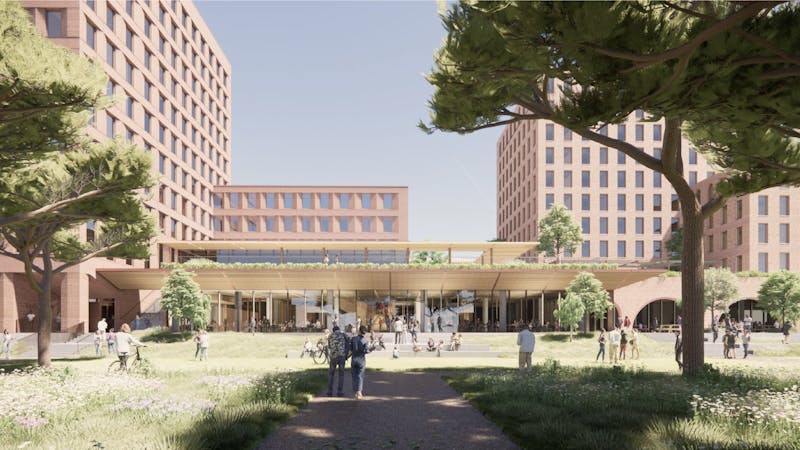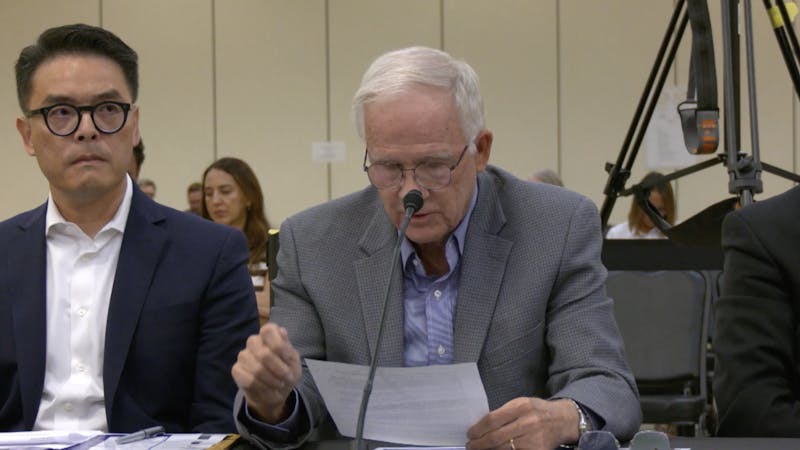Moody Center’s ‘Radical Revisionists’ confronts colonial narratives

Last Friday, the Moody Center for the Arts came alive with visitors for the opening reception of “Radical Revisionists: Contemporary African Artists Confronting Past and Present.” The new exhibit, on display from Jan. 24 to May 16, features artists from Africa and its diaspora who challenge Eurocentric narratives of colonialism, migration and identity. According to Moody Executive Director Alison Weaver, “Radical Revisionists” was inspired by the October opening of Rice’s new Center for African and African American Studies as well as the theme of this year’s FotoFest Biennial, an international photographic arts festival based in Houston: “African Cosmologies — Photography, Time and the Other.”
“We focused on contemporary artists addressing the colonial past and post-colonial present and found artists interested in these issues from across the continent including South Africa, Senegal, Democratic Republic of Congo, Nigeria and Cameroon,” Weaver said.
“Softening the Borders,” an interactive installation by Ghanaian artist Serge Attukwei Clottey, occupies the central gallery. With chairs haphazardly suspended in midair by strings, adorned with clothes and mosaics of stamps, the installation conveys a sense of disorientation and displacement.
The surrounding walls glow with Clottey’s “yellow brick road” leading home — a series of yellow canvases plastered with passport pages, with work gloves beneath them.
The most notable part of the installation was a performance by the artist himself. Without introduction, Clottey moved silently through the installation, vigorously mopping and scrubbing the floor on his hands and knees. Meanwhile, well-dressed actors holding wine glasses played the part of aloof museum-goers.
The artist’s thoughtful questioning of the roles played by class and nationality in accessing art incorporated the audience as part of the exhibit. As an installation that aims to explore the anxieties of belonging in foreign environments, “Softening the Borders” forced those engaging with the body of work to examine their own positionality.
Clottey’s invitation for reflection prefaced the exhibits in the Brown Foundation Gallery, which include a vivid and evocative body of photography, sculpture and mixed media. According to the introductory text, the artworks shatter a uniform understanding of a colonial past and postcolonial present. Instead, they explore diverse subjects such as migration and displacement, representation and identity, consumerism and materialism and the exploitation of land, resources and people.
The gallery itself has been transformed by vibrant red, green and yellow partition walls that break the room up into smaller sections. Upon entering, large photo prints by Senegalese artist Omar Victor Diop flank the corridor on either side, embracing the continuing theme of rich colors. His series recreates portraits of famous figures of African descent while incorporating contemporary sports iconography to pull them into the present.
The next series of photographs sharply contrasts with Diop’s spectacular direction of color. South African artist Zanele Muholi’s piercing black and white self-portraits exaggerate skin tone as a reclamation of blackness. The self-portraits are ornamented with everyday tools, echoing Clottey’s exploration of class and labor, as well as putting Muholi in dialogue with another South African photographer who manipulates everyday materials, Robin Rhode.
Rhode, the Moody’s spring season artist-in-residence, innovatively combines photography with public art. In a sequence of visceral photographs, a figure contorts his body in front of a growing number of ships drawn on a white background. The abundant use of yellow parallels Clottey’s installation, drawing out similar themes of migration and active participation with the art.
One of the most arresting sights in the gallery is a life-size model of a child falling backwards off a globe, grasping at something unseen. The globe is covered by an infrared heat map which indicates areas of the world most heavily impacted by climate change. The work, Yinka Shonibare’s “Girl on Globe,” is a poignant expression of the anxiety surrounding the present state of climate emergency.
Yet another installation confronts the damaging effects of pollution and consumerism on the environment. “Plastic Tree” by Pascale Marthine Tayou juxtaposes protruding branches knotted with brightly-colored plastic shopping bags against a bright red wall. The attractive colors of the installation provide a compelling metaphor for the destructive allure of excessive consumption.
The exhibition features multimedia artist Mary Sibande’s immersive virtual reality installation, “A Crescendo of Ecstasy.” Consisting of hanging fetal-shaped creatures and a mask molded on the artist’s face, the virtual reality experience allows viewers to enter an alternate land where tendrils shift over a woman’s body. According to the introductory text, it imagines a world unbound by the histories of female servitude.
“Radical Revisionists” is saturated in dazzling colors and clear-eyed activism. The exhibit succeeds in resisting the erasure and homogenization of marginalized histories by embracing Afrocentric perspectives on contemporary issues. The unique and deeply personal voices of the exhibiting artists complement and converse with one another, creating a space that not only confronts dominant Western narratives surrounding colonialism, but also urges its audience to examine their own positions within post-colonial structures of power.
“Radical Revisionists” will be on view until May 16, 2020. The Moody Center is open 10 a.m. - 5 p.m. Tuesday through Saturday. The exhibition spaces are free and open to the public.
More from The Rice Thresher

Rice announces Chao College as 12th residential college
Rice announced that the 12th residential college will be named Ting Tsung and Wei Fong Chao College Aug. 19. The college, set to open in fall 2026, will contain nearly 300 on-campus beds.
Dining access fund announced following on-campus unlimited meal swipes
Rice announced new food assistance programs on Tuesday to account for the controversial change in the on-campus meal swipe plan.

Rice disaster prediction model discussed at hearing on deadly Central Texas floods
The House and Senate Select Committees on Disaster Preparedness and Flooding held a hearing on July 31 in Kerrville to address the deadly July 4 flooding in Central Texas. The flooding along the banks of the Guadalupe River killed 108 people, including 37 children. In the charged hearing, Texas lawmakers and flood survivors criticized the local response to the disaster.


Please note All comments are eligible for publication by The Rice Thresher.